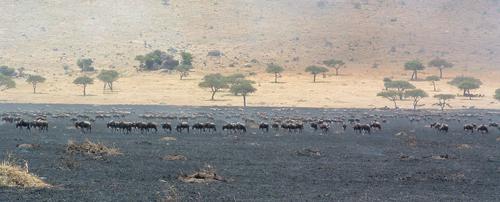Abstract
Fires are a natural part of savannahs and have been used as a management tool for thousands of years. Balanites aegyptiaca (L) is an important tree in semi-arid ecosystems. I investigated the effects of fire on Balanite saplings in Masai Mara National Reserve, Kenya. In October and November 2004 measurements was taken on their height, perimeter and number of damaged and undamaged tops. This was done in areas burnt in June 2004 (early fire, E), in October 2004 (late fire, L) and in areas not burnt for at least two years (control, C).
24 transect, 1000 m in length, were selected, eight in each treatment. Saplings was randomly selected within 250 meters from the transect midline. The samplings were done during three seasons. Season one, three days before burning, season two, 14 days after fire and season three, two month after fire. Season one only included L treatment for investigating the direct effect of fire. Grass was cut next to the saplings to estimate fire intensity.
The length, number of tops and burnable biomass was severely reduced by fire. The effects hade to some extend reduced to season three. To enable Balanites aegyptiaca to re-establish in Masai Mara, one approach might be to reduce the number of herbivores and prolonging the period between fires, even thought that is inconsistent with conservation efforts.
Keyword(s): Balanites aegyptiaca, fire, savannah, ecology, botany, herbivory, grass-tree interaction, browsing, grazing.
Wildebeests and Balanite trees on a newly burnt area

Responsible for this page:
Director of undergraduate studies Biology
Last updated:
10/09/05
